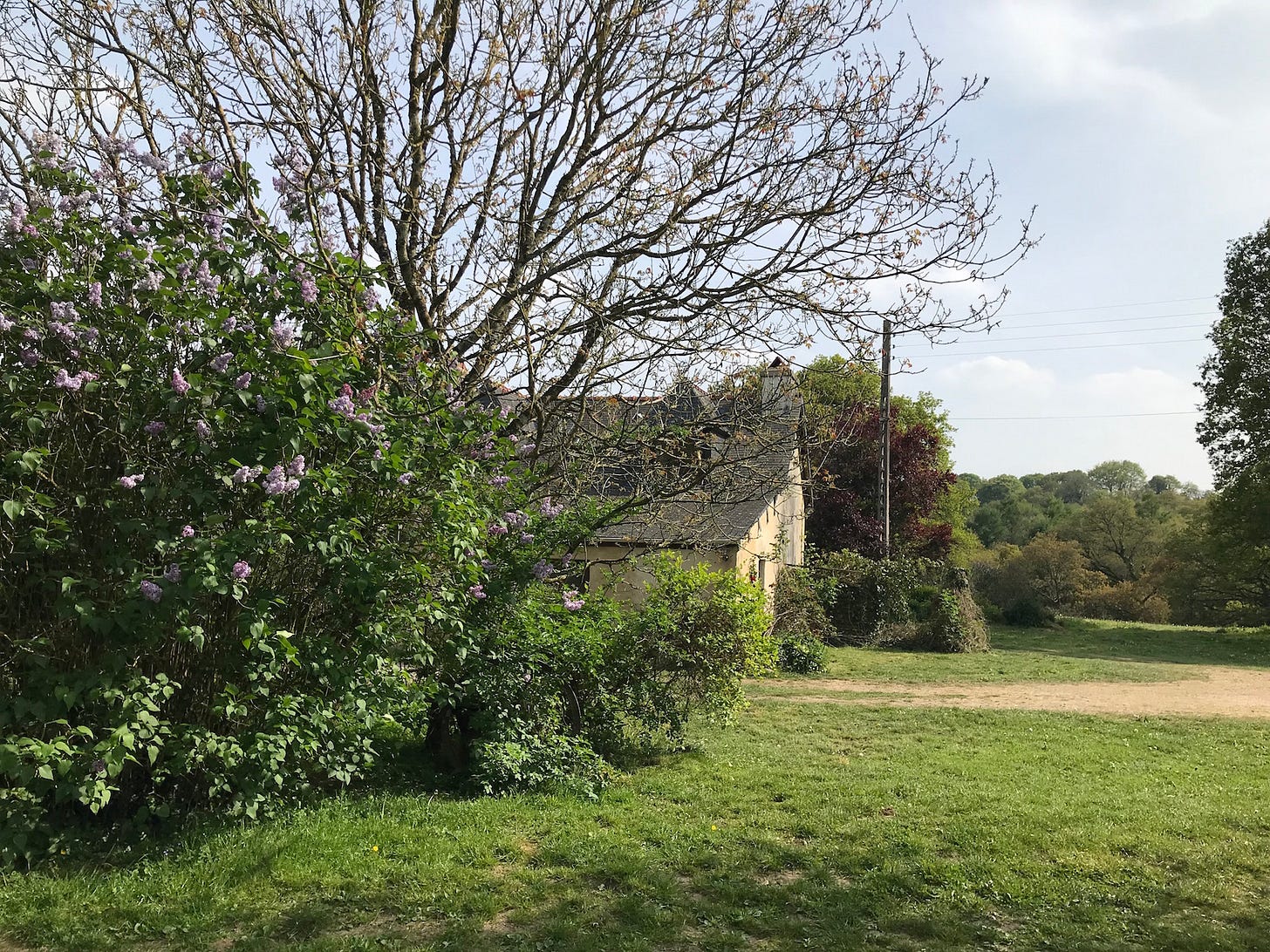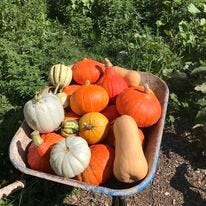HOME & BELONGING
Where is the heart at peace?
In which we discover that we have arrived
Albert Camus said: ‘We travel for years without much idea of what we are seeking. We wander in the tumult, entangled in desires and fears. Then suddenly we arrive at one of those two or three places that are waiting for us patiently in the world. We arrive there and the heart is at last at peace – we discover that we have arrived.’
‘Those two or three places that are waiting for us.’ I think it was reading this little quote from Camus that freed me up from thinking there would be just one place that I might call home. Or maybe it was just that I grew up, and stopped believing in the One and Only anything(/one).
I have a very strong sense of place and belonging. What I’ve discovered, though, is that I can transfer that from place to place, without losing depth.
Firstly, I suppose, I have a sense of belonging to the far West of Cornwall, in Great Britain: that little Atlantic peninsula, the place of my family and ancestors from forever.
I’ve spent most of my adult life on wild little Dartmoor, so part of me dwells there.
Then there is the Isle of Iona in the Scottish Hebrides: a little speck of rock, some of the oldest rock on the planet, that has drawn so many people for so many thousands (probably) of years. Each year for many years now, I’ve led a writing retreat here; and each year I find that, like me, the people who come to share this space with me find a temporary but profound home that speaks to the heart in a way that’s hard to find in our daily lives.
In which I remember that wherever you go there you are*
As I write this here in Brittany, a flock of redwing flashes past the window. I wonder whether, as migrants, they have a sense of two homes, one for each half of the year, or whether they simply belong wherever they find themselves?
Before we were pastoralists we were nomads. I believe these twin pulls still magnetise us. Even as we’re looking for home, we are pulled to a bigger less tangible, less fixed, sphere. For in the end, maybe ‘home’ is both within us and also nowhere at all... We belong nowhere; and everywhere.
But for now, for any now, the heart can (hopefully) find itself at rest in some places where the body lands up.
And so for me it is here, close to ‘my’ magical forest in the Parc d’Armorique; somewhere my Cornish Celtic ancestors also landed up way back in the early centuries of the 1st millennium AD.
But anyway. To follow on from the beginnings of my story, broken arm etc: whenever budget, work and COVID allowed it, we looked at various properties in, yes, Finistère. Brittany had won out over the (romantic, golden-stoned, pan-tiled, hot, water-stressed) south, and simply that fact soothed my heart.
However, none was at all promising for what we wanted: somewhere old, secluded, wooded, and with much potential for a relatively self-sufficient land project that could feed others if necessary, and would ultimately ‘give back’ to the planet: growing veg, fruit, and a forest garden, much biodiversity, all blurring into the edges of untended wilder wooded land.
The Fermette Isolée (!!!)
Then, online, came an ad for a ‘Fermette isolée!!! In the beautiful middles out of nowhere!!’ (Yes, with all those exclamation marks.)
I showed it to The Man.
Three things impeded our possible future at that time in such a spot. One was the impossibility (COVID restrictions; work commitments) of crossing the Channel.
The second was an uncertainty on the part of TM about leaving Britain, despite its flaws: the Tory government, the crowdedness, the busy roads, especially the cost of housing.
The third was an unfortunate mismatch of communication between myself and the rather rude and unhelpful agent.
CORRECTION: TM reminds me there was a fourth impediment to our possible future: when he saw it online he liked the land but (being an eco-builder) thought the house looked crap.
And, of course, there was, and is, Brexit.
That – Brexit apart, which still causes problems – is all well in our past now.
A few months later we’re driving down a narrow tree-lined winding lane in this very middles of nowhere. We’ve just driven through arable land, mainly maize fields for the intensive farming industry; a far cry from the Forest, just 5 miles away, which has entranced me, and inspired my book A Spell in the Forest – tongues in trees. Beside me, I can feel that TM has tensed up.
What a relief then when the lane starts dipping down into woodland. This lane with its bridge of trees lifts my heart: so familiar from my Westcountry childhood life in North Devon (yes, that coast is another place of belonging). And there, right on the corner of the land we’re looking at, is a most magnificent and enormous beech tree, a favourite for TM.
This time we are meeting with a very different estate agent: someone whom we know (for this area goes back a long way in my own personal life), and who routinely goes the extra mile for her clients. How fortunate that the property, not having sold in the interim, is on her books.
Yes, it is relatively isolated; and yes it is beautiful, the land spectacularly so; the house (to my eyes) in a charming, shambling belle-laide kind of way. It’s an old longère; parts of it dating from the 1700s; some possibly much older; the site for the house itself probably having hosted dwellings for more hundreds of years. Characterful. (Just how ‘characterful’ it is is not apparent at this stage.)
In which TM challenges my sense that if it’s old it must be beautiful & charming
I admit it’s not beautiful in the ordered and functioning way that the house we have just left in South Devon is. (I spoke of this in my last – first – post.) That house and land is now owned – to the extent that any of us can ‘own’ land – by a couple with dreams and a young child. They will bring it to life again without us, with their ‘democratic community’: a new generation of young people learning about the land.
The interior of this old house is charming. Actually, I need to qualify that: the not-quite-even surfaces and not-quite-plumb walls (TM interjects: the not-QUITE-even surfaces and not-QUITE-plumb walls??), the ancient lintels, the fireplace that, with its unpointed smoke-blackened stone surround takes up a whole wall, the beautiful and rickety staircase with a waney-edged stringer and what must be a truly old adzed balustrade beside it, to which is attached a ship’s rope – all this to me is charming. TM is horrified rather than charmed, and these details will later cause some trouble between us, as well as stopping TM feel as if he really belongs here. (That and the language issue.)
We both like the huge wood-floored bathroom with its old-wood-panelled bath, and we are both delighted that the two woodburners and the range in the large kitchen-dining room are run off wood from the land. We are especially pleased that the range will not only cook, raise our bread, and dry our clothes, but it will also, it seems, heat the water and run radiators in what is a large house. (Later, at the signing of the contract, we discover that none of these three actually works, or is safe either.)
I love the first floor bedroom, even if it is rather alarming to open the long French windows to the Home Meadow and the flowering sweet chestnut trees and nearly step out into the beautiful middles of nothing.
The voice of the land
But it’s the land and the location that speak to us. All around the house is the land we will be learning to belong to: south-facing, garden segueing into meadow and woodland with, we’re told, a few bluebells in spring. Trees, trees, trees; many self-sown, many planted fruit and nut trees. At the bottom of the wooded slope is a stream.
Then there are the extra meadows, one of them the Bramley Field adjoining the holloway that abuts the Home Meadow, another large meadow behind the house so that we are enveloped, and two further outlying fields (in rural Brittany people appear to inherit individual parcels of disparate and scattered land) in on the price. Another small plot immediately adjoins the meadow behind the house (the North Field), and is currently growing its own deciduous trees without any help at all from us. The other two parcels of land are being left to do their own thing. One of them frequently hosts a roe deer family and hares. And yes, we do have sangliers – wild boar. (One day I’ll tell you the story of being chased up an apple tree and kept there for a couple of hours by wild boar.)
We intend to work the land sustainably – let it work us, too – by creating edible systems rooted in permaculture and forest gardening, perennial systems that work in harmony, in synergy, with natural processes.
There will be, of course, a large veg plot, organic and, if I persuade TM, created or at least sustained on no-dig principles. (Note: this has partly happened: we reclaimed some meadow with much cardboard from many house-moving boxes, all topped with wonderful woodchip, about which I am a nerd.)
Next year we will be trying to grow chickpeas, and the local gluten-free grain (or rather seed), buckwheat (also known as sarrasin, blé noir; gwinizh du in Breton). We may try a small crop of spelt or wheat.
We are creating a vegan smallholding; of which more of the why and what another time.
As rewilding is so crucial for our poor planet and its other-than-human inhabitants (did you know that only 4% of all mammals on earth are wild, rather than farmed by humans?) some land will be left to do its own thing.
So here we are, in the Beautiful Middles of Nowhere; and we have had an amazing and abundant harvest for our first year’s growing.
* With apologies to Jon Kabat-Zinn for pinching the title of his truly wonderful book about present-moment-living – that book has resided by my bed for 30 years nearly.








Roselle- I thoroughly enjoyed your narration, particularly when you got to this part here: "I love the first floor bedroom, even if it is rather alarming to open the long French windows to the Home Meadow and the flowering sweet chestnut trees and nearly step out into the beautiful middles of nothing." Something about this description is very vivid and alive. Chestnut always helps. :)
So pleased that you are finding something of worth in Diggers and Dreamers, and, more importantly, that you are continuing on the path the book recounts one very short step along. My Letters morphed into writings on local history and geography for the Historical Society, with a recent short book. I'm also working on Odysseos' Island, a second novel set in Greece, after my Dionysos' Island. It will conclude on Ithaka, which has a nice poetic resonance. But fear at the current rate I'll be finished before it is! A continuing need to write gets me to my desk. I do hope volume 2 of A Spell is going well, and that you enjoyably continue your important work. Very best wishes to you both.